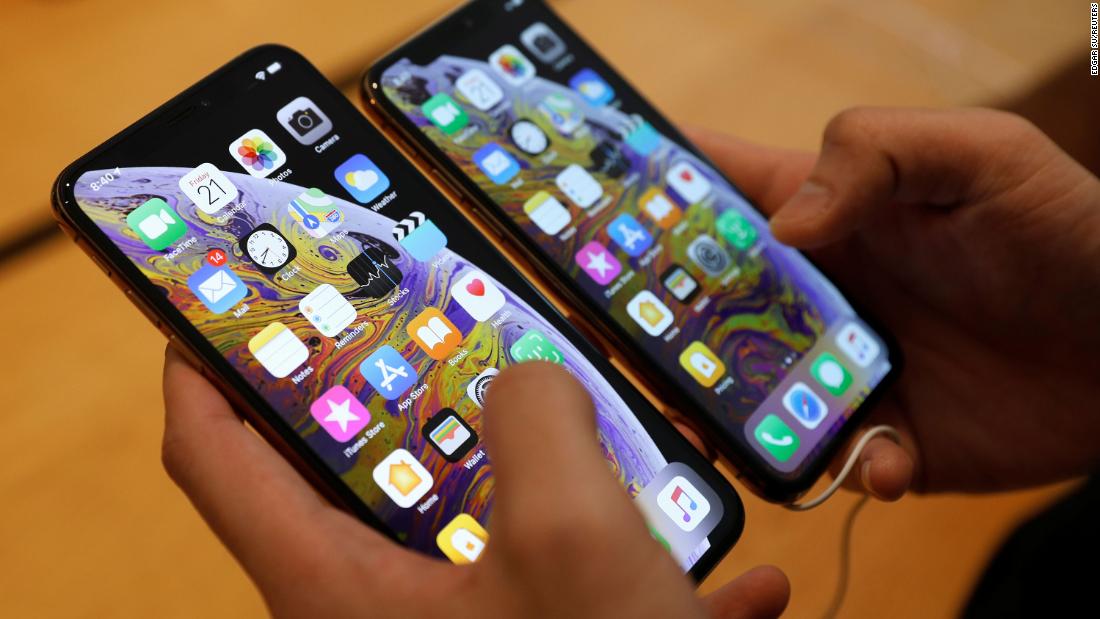
In the past week, Facebook, Amazon and Google released earnings results with lighter sales numbers than Wall Street expected. Worse still: it comes at a time when the market is seized by turbulence about rising interest rates and an escalating trade war with China.
Now it's left to Apple to prove that the so-called FAANG companies still have some bite.
Apple is scheduled to release its fourth-quarter earnings results after the bell on Thursday. The report, which covers the three months ending in September, only captures the first week of sales for the new iPhone XS and XS Max. But investors will be paying close attention to Apple's sales forecast for the upcoming holiday quarter for an early glimpse into the strength of Apple's new iPhone lineup.
The consensus estimate among analysts is for Apple to post sales of $61.6 billion for the September quarter, up 17% from the prior year, even as the number of iPhones sold is expected to stay relatively flat at 48 million.
"While long-term iPhone unit growth will be in the low single digits, the company is finding new ways to make more money from their existing user base," Gene Munster, an analyst with Loup Ventures, wrote in a note this week.
This is the new story for Apple. These days, it's less about how many more iPhones the company can sell from one year to the next than how much additional revenue it can squeeze out of its flagship product through price hikes and the growth of supplementary services like Apple Pay, iCloud and Apple Music subscriptions.
The average selling price of the iPhone climbed to $724 in the quarter ending in June, up from $606 a year earlier. That uptick should only continue with the introduction of the XS and XS Max, the latter of which costs as much as $1,449. The more "affordable" iPhone XR, which went on sale in October, still starts at $750.
It's a continuation of the strategy Apple pushed forward in 2017 with the launch of the $1,000 iPhone X. At the time, investors worried about the potential for sticker shock.
Those concerns were unfounded. The iPhone X turned out to be a big hit, quickly becoming Apple's top selling smartphone. The surge in Apple's overall sales, and average selling price, show that customers are in fact willing to open up their purses for more expensive Apple products.
A year later, Apple is going all-in on price hikes.
In addition to raising prices on the iPhone line, Apple also recently announced more expensive models of the iPad Pro, MacBook Air and the Mac Mini. This suite of pricier products could help power Apple's sales in the pivotal holiday quarter.
Analysts expect Apple's sales to hit $93 billion for the final three months of 2018, up from $88.3 billion a year earlier. Daniel Ives, an analyst with Wedbush, says Apple's guidance for this quarter "represents a key barometer of health for the all-important XS/XR iPhone demand cycle."
No comments:
Post a Comment